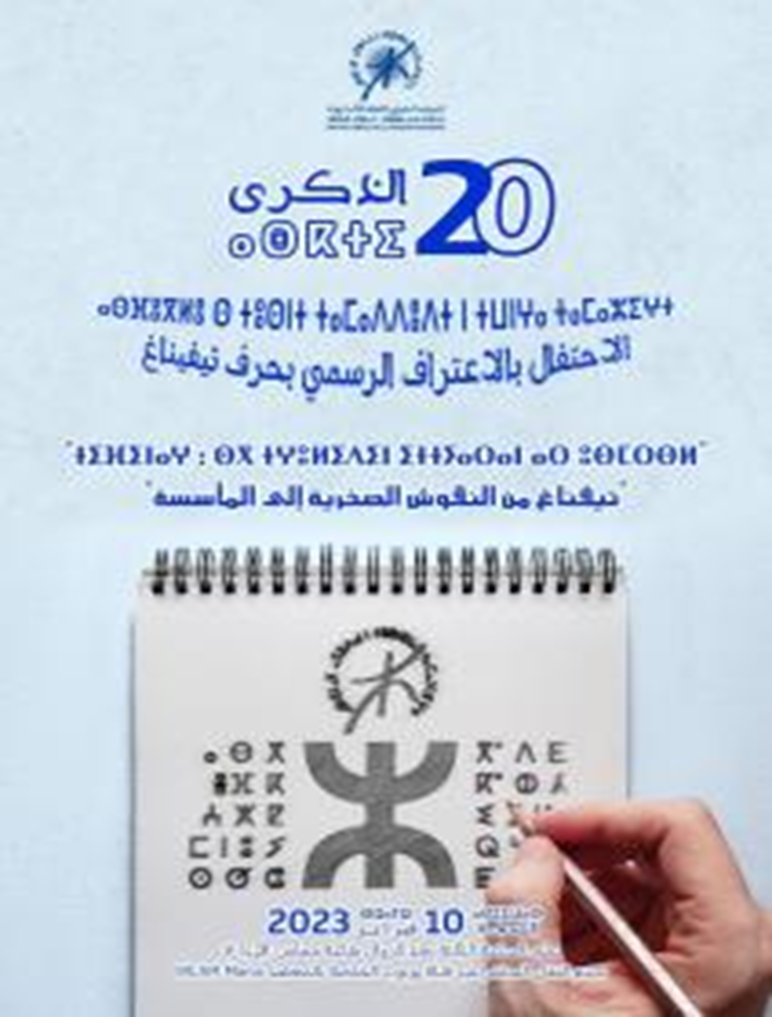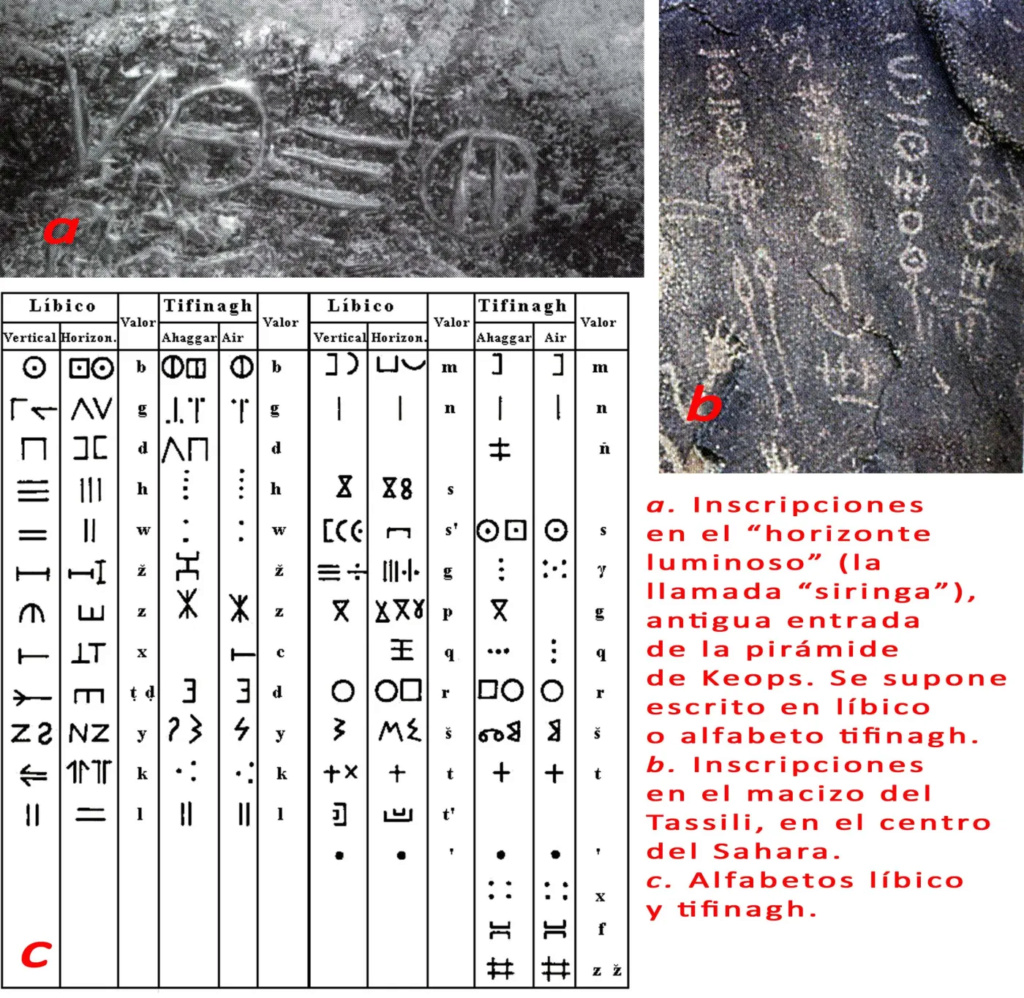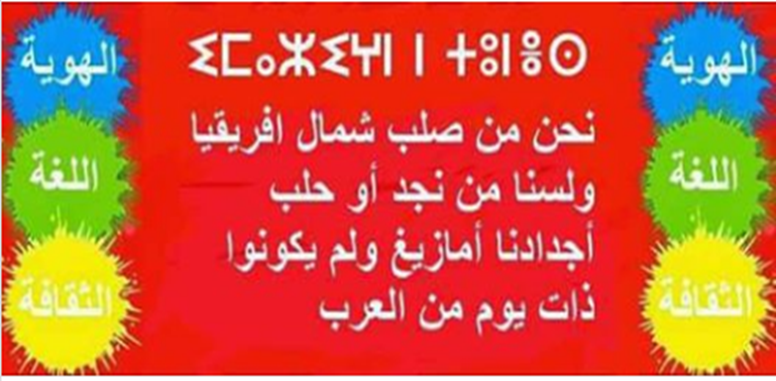IRCAM celebrates the twentieth anniversary of the official recognition of the Tifinagh letter

The Royal Institute of Amazigh Culture commemorates the twentieth anniversary of the official recognition of the Tifinagh letter and its adoption for writing the Amazigh language.
The institute celebrates the official recognition of the Tifinagh letter under the slogan “Tifinagh from rock inscriptions to institutionalization” on Friday, February 10, at 3:00 pm in the boardroom. Direct transmission will also take place via the YouTube channel of the National Institute of Amazigh Culture.
And the celebration of the memory of this fateful acquired event through which the Amazigh language was able to prove its linguistic roots and achieve accumulations at the level of writing and the Amazigh library, which culminated in constitutional recognition in 2011.

Tifinagh - is the ancient Amazigh line, whose invention dates back to 3000 years BC. It extends from northern Sudan to the Canary Islands, Sicily and Andalusia to the north of the Canary Islands. The Amazigh alphabet was in the early stages of its existence. It consists of 16 silent letters. And it became 23 in the era of the Numidian Amazigh kingdom, of which Masinissa was the most prominent king. Then added to it at a later time. vowels. It's called Amazigh. Tedbakken

The ancient Amazighs were writing these letters on the walls of caves and rocks. They left us more than a thousand inscriptions on the stone plates. And they left a number of commemorative inscriptions in Tunisia, Algeria, Mali, Niger and Morocco... especially what is accompanied by its Latin and Phoenician translations. The researcher. Jerky Marky. Seriously trying to explain it. However, most of the ancient Amazigh inscriptions are still waiting for specialists, who are required to master the Amazigh language first. Then one of the dead and living languages such as Phoenician, Greek, Byzantine and Latin. In Morocco, there are examples of rock inscriptions in Azib Nikis and Yakour in the Great Atlas. And the engraving of the Azrou plate and the engraving of the Tiflet plate. In the areas of Samara there are complete texts written in Tifinagh letters. There are other engravings

Museum of Tetouan and Sidi Slimane in Rabat. The Friday eye plate at the Casablanca Museum. A group of intellectuals and researchers managed to make inscriptions in Tifinagh, and they were confiscated in the markets. It is worth noting that this line has not been interrupted. It is now used on the Internet. This line is still written throughout the land of Tamazgha, and it has a great turnout by the Amazighs who are jealous of their Amazigh language.
Source: websites

